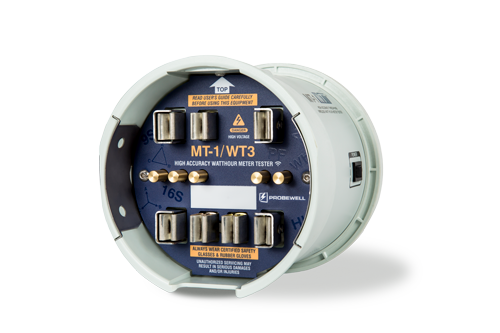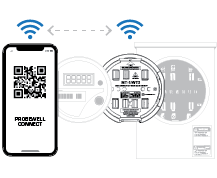Nowadays, electric utilities expect AMI electrical grids and MDMS solution to provide advanced data analytics so they can make informed data-driven decisions to achieve operational efficiency (hardware and services).
 |
Customers often distrust new technologies and are reluctant to adopt them. It is up to the utilities to reassure their customers as part of their onboarding process and a good way to do this is to keep them informed by making the process as transparent as possible.
When it comes to AMI efficiency, the key factor is the accuracy of the meters, thus the reliability of the data they aggregate.
When deploying or maintaining an AMI grid, some discrepancies may be noticed in the data after the initial transition. For instance, the data collected from a mechanical meter may differ from the data collected from a digital meter, which is often more accurate, naturally prompting clients to question their bill.
[/vc_message][vc_empty_space]
Verifying the accuracy of the meter
The WT Series wireless tester help building a better customer’s experience, by allowing sharing of traceable test reports as part of the onboarding process and facilitate the adoption of the AMI technology and finally, improve your ROI without affecting your bottom line.
Our meter tester enables a wide range of testing options. It allows the operator to assess the electric meter on site and in real time, checking the accuracy of the meter’s reading and performance. The typical accuracy is ± 0.02%, to ensure fair billing.
It is possible to perform a Quick Test, using the Probewell Connect application to quickly assess the accuracy of each meter and keep a traceable report of the meters accuracy readings, before and after the transition (as found and as left reporting). The Quick Test runs a series of sub-tests (for each of the loads: HL, PF and LL and it calculates the weight average), in a single operation.
The test results are securely stored within the unit and includes the meter ID, time-stamped and geolocation data for traceability purpose. The test reports can be shared by e-mail, right from the operator’s mobile to the customer and the utility’s customer service department for a follow-up.
Advantages:
· Quick and easy setup
· Customizable configuration
· Task automation
· Validation of test results at a glance
· Undeniable traceability
· Shareable findings, (export report as CSV or PDF)
· Lower operating costs thanks to optimized processes.
Available test:
- Quick Test
- Full Test
- Custom Test
- Line Monitor
- Demand Test
- Creep Test
- KYZ Test
- Manual / Tracking
- 4 Quad Test VARh
- 4 Quad Test Wh
Transformer rated installations.
If it’s a CT rated installation, the Probewell ST-3/XT3 site tester is another great way to improve your ROI during a site visit., Perform a complete quality assessment of an installation, including the CT/PT ratio, the burden and the admittance test. Within minutes, a CT/PT instrument-rated installation can be accurately tested by a field worker.
Get immediate confirmation, that the installations are optimal to achieve hardware and service operational efficiency by using the Probewell WT Series meter tester or XT Series site testers as part of your AMI deployment field tools.
- Achieve hardware and service operational efficiency
- Build a better customer’s experience,
- Share traceable test reports as part of the onboarding process
- Improve your ROI without affecting your bottom line.
Advantages:
- Full RMS and line cycle measurement of both secondary and primary currents and voltages
- Compatible input voltage from 100 to 480 VAC
- Plug & “Play”
- Uncompromised accuracy
Available test:
- Power Quality test
- Real time waveform analysis
- Voltage and Current phase angle
- Total Harmonic Distortion analysis
- CT/PT ratio and phase shift
- Burden test
- Admittance
To know more about our solutions, get in touch!
sales@probewell.com
Click here to see the MT-1/WT3 full technical specifications
Click here to see the ST-3/XT3 full technical specifications

 Probewell offers the WT series wireless meter testers that can quickly detect drifting of forward or reverse power flow accuracy in both Wh and VARh measurement modes as part of their standard
Probewell offers the WT series wireless meter testers that can quickly detect drifting of forward or reverse power flow accuracy in both Wh and VARh measurement modes as part of their standard